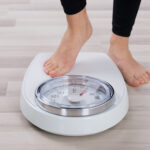
Committing to a consistent workout regime can be tough.
Gym memberships are costlier than ever, and busy work schedules can easily steal away time needed to commute to and from fitness centers. With these obstacles in the way, it can be hard for many to lose weight and reach the fitness goals they have for themselves.
Running for weight loss can be a great way to work around these issues. Running is free and you can do it anywhere. It requires no costly commitments in the area of money or time. All you need is yourself and the open road ahead of you.
Starting a running routine is easy to do regardless of one’s current fitness level. If you’re new to running for weight loss, you might be wondering how to best set yourself up for success. Read on, and we’ll walk you through everything you need to know about dropping pounds by running.
How Does Running Shed Pounds?
Running is one of the best exercises when it comes to losing weight. According to many studies, runners maintain leaner physiques than those who participate in similar times of other exercises.
Why is this?
Running tests the human body more than any other form of cardio. A minute spent running burns more calories than a minute spent swimming, biking, lifting weights, or almost any other form of exercise.
When running, an average person will burn about 100 calories per mile.
How Much Effort Does it Take to Lose Weight?
You don’t have to be running 10 miles a day to lose pounds. Nor do you have to run for hours to start seeing results. A beginner’s running workout regime doesn’t have to be intense or even longer than twenty minutes.
You don’t even have to spend the whole time running– in fact, it’s recommended that you don’t. A beginner’s running plan should involve a mix of running and brisk walking. If you were to run full on during your entire workout, you’d be likely to exhaust yourself before reaching any actual goals.
Walking intervals allow your body to recover during runs, and gives you the energy to go further and longer during your runs. When attempting to lose weight, endurance is a more important factor than distance or speed. The longer you run, the more calories you’ll burn and the more pounds you’ll shed.
Running with breaks also can help to decrease the likelihood of injury, aches, or over-exhaustion. All things you’ll want to avoid if you plan to keep on running as part of your normal routine.
A Proper Beginner’s Routine
There is no one size fits all regiment when it comes to running. General outlines can be followed, but it’s important that new runners listen carefully to their bodies as they begin to ease into a workout routine.
Especially if you are older in age or are overweight, you should keep your workout in line with what you can comfortably do. Pushing too far outside your comfort zone can result in injury. And that’s the last thing you want from your work out.
As a newer runner, try to hit the pavement for at least twenty minutes a day. Newer runners are encouraged to use a mix of walking and running. Run for two minutes, then slow to a walk for two more. Switch back and forth over the course of your run.
As you get deeper into your workout routine and feel more comfortable running, you can begin to increase the time spent running versus walking. Slowly add more running time each week. Three minutes running, then two minutes walking. The next week, try five minutes running and two minutes walking.
You can begin to extend the length of your runs as the weeks go by as well, but you really don’t need longer than a 30 minute run per day to see the results you seek.
Other Important Factors
When it comes to running, there are certain practices that you should keep in mind for your own comfort and safety.
You may be eager to hop straight into your workouts, and that’s understandable. But the behavior surrounding your runs can be just as important as the actual running.
Warm Ups and Cool Downs
Starting with a five-minute warm-up walk is an essential step in preparing your body for a run. A short warm-up walk can raise your body temperature and increase blood flow to your muscles prior to a run.
A cool down of similar length is recommended as well. Doing so helps to regulate your cardiovascular system and adjust blood flow.
Though these might add a few minutes to your workout routine, they significantly reduce stress on your heart and muscles. They can help to ensure you’re in a good shape to keep running for weeks to come.
A Proper Diet
If you really want to see results from your running, it’s important you pair your new regime with a proper diet. Running every day will do you no good if you turn around and grab ice cream and fast food for dinner that night.
DO NOT attempt to limit your food intake in an attempt to increase weight loss. Outside of being unhealthy and dangerous, it simply won’t work. When the body doesn’t receive food, it actually holds on to and stores fat as opposed to burning it.
Instead, replace junk food in your diet with more fruits, vegetables, and lean proteins. These healthy and high-quality foods will give your body proper nutrients and will be easier to burn off when running. They’re also typically much lower in calorie intake than fried foods or processed grains.
Exercise does naturally increase one’s appetite, and you may find yourself with larger food cravings once you start your running routine. As long as you’re adjusting your diet properly, eating a bit more to satiate yourself shouldn’t affect your fitness results.
Running For Weight Loss
Running is the form of exercise with the lowest barrier to entry, which makes it a great workout for fitness beginners. Running for weight loss can be a relatively easy and effective way to drop pounds and realize one’s personal goals.
Check out our blog for more weight loss tips, tricks, and advice.












